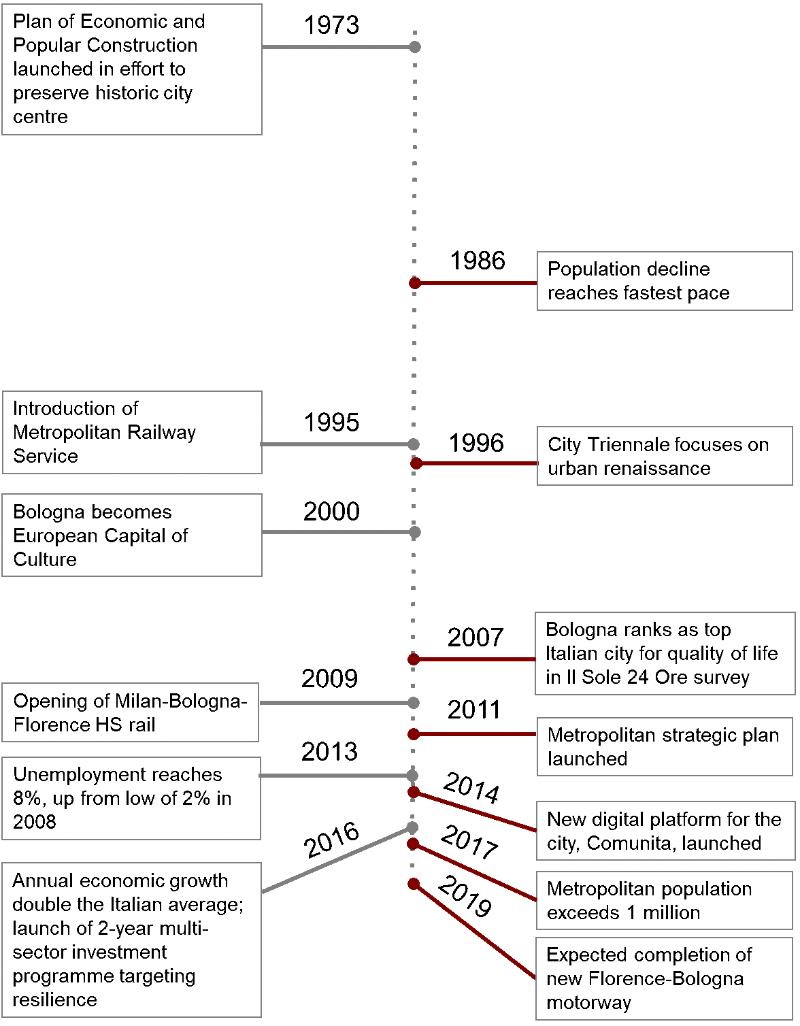By Gianni Carbonaro and Chiara Pancotti.
The findings, interpretations and conclusions are those of the authors and do not necessarily reflect the views of the European Investment Bank.
>> Download the entire essay as eBook or PDF
Although in many ways a typical thriving Northern Italian post-industrial metropolis, Emilia-Romagna’s capital Bologna possesses a number of institutional, spatial and socioeconomic specificities that set it apart from its regional and national context. As an important agricultural, industrial, financial and transport hub, Bologna is today Italy’s seventh most populous city, at the heart of a metropolitan area of about one million people.
In the post-war years, Bologna positioned itself as a thriving industrial centre and a political stronghold of the Italian Communist Party. The city has a long history of progressive political thought and had an uninterrupted series of left-wing mayors between 1945 and 1999. In the 1970s and 1980s, Bologna, like many other European cities, was subject to discontentment with deindustrialisation. Between 1975 and 1995, the core city of Bologna was losing around 2,000 inhabitants per year, although the wider province gained around 2,500 per year, as people fled to the suburbs in search of a safer and more pleasant environment.
Since the 1980s, Bologna’s urban development has been underpinned by a strong cycle of investment in intra- and inter-city transport links. In the 1980s, Bologna was one of the first European cities to experiment with the concept of free public transport. In the 1990s, investment in the Milan-Bologna high-speed train network cut journey times between the two cities from 105 to 60 minutes, vastly enhancing the attractiveness of inter-city commuting and encouraging inner-city corporate investment. Finally, since the 2000s, Bologna has also benefitted from an increased rate of centrally funded investment in highways and motorways. A new Florence-Bologna motorway, to be completed in 2019, will replace the obsolete one built in the 1960s and cut the journey time between the two cities from 90 to 50 minutes.
